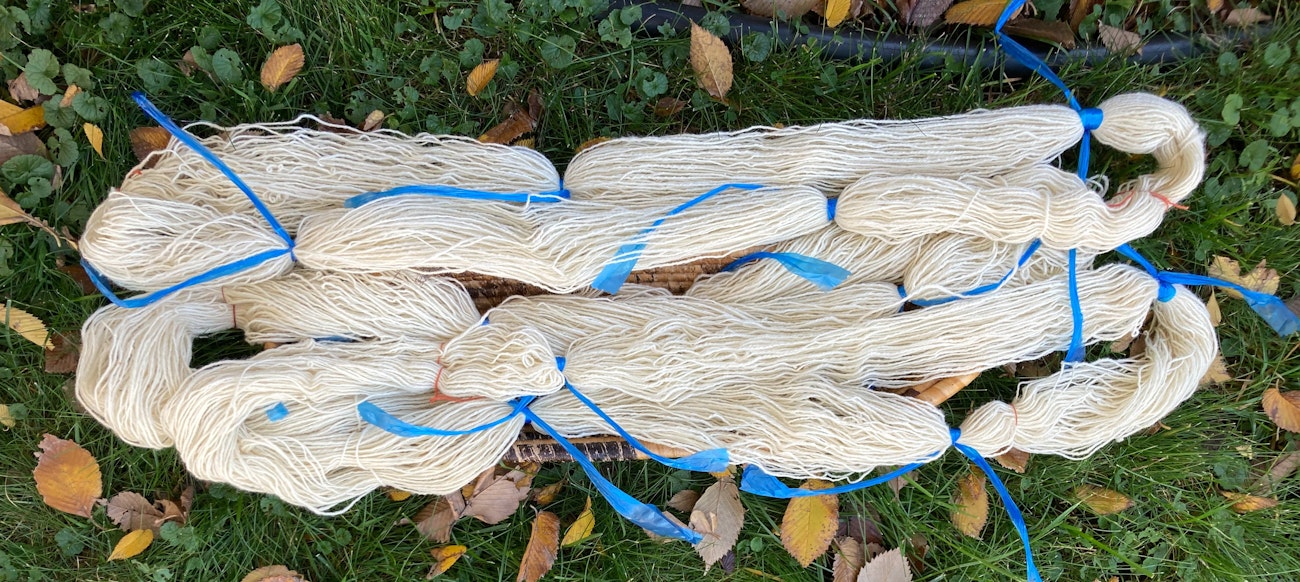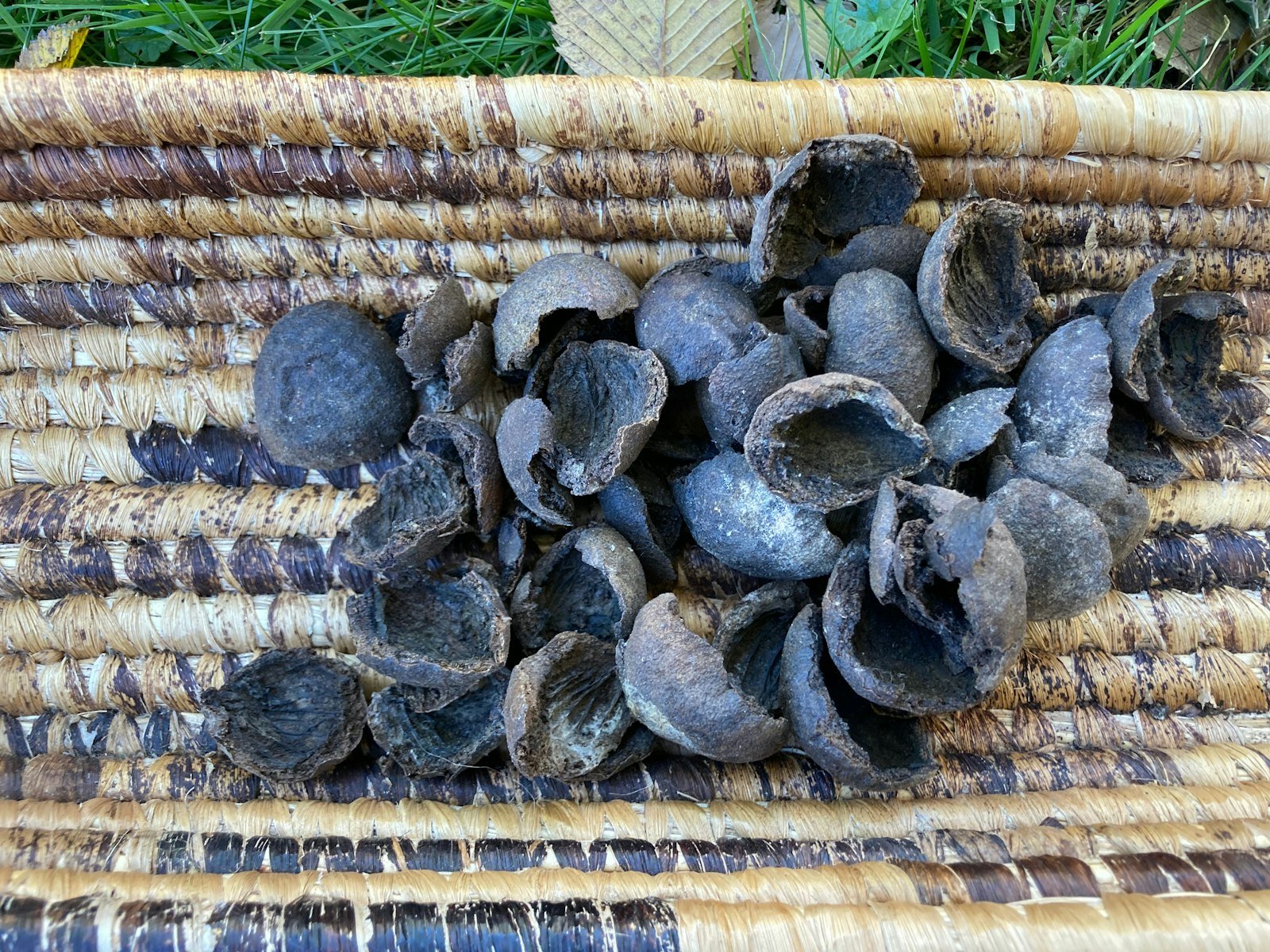I recently spun a three-ply yarn from a creamy white Border Leicester top, and while I love the natural colors of the fibers, I also love working with nature to create colors and wanted to dye this yarn. For this particular yarn, which will likely be knit up into a mitten and hat set, I wanted to try a technique that has been on my to-do list since reading about it—using resists to make Flammegarn.

Some of my favorite colors to wear are warm browns, and black walnut hulls can make fantastic colors. Black walnut dye is the easiest natural dye I know of and one I always recommend to people who want to start out with dyeing using materials from nature. It does not require a mordant to be colorfast so there is no need to pre-treat your fiber—simply create the dye bath and dye your fiber.
I used black walnut hulls that I had dried several years ago. A friend had dropped off a large bucket of black walnuts from their yard and I put on gloves and peeled off the green hulls in chunks and then spread them out to dry indoors. Squirrels find black walnuts irresistible and will scatter the hulls in search of the nuts if you leave them outside. Once dry, I put them in a brown paper grocery bag and dipped into my stash every time I wanted to use some for dyeing. I am down to the last of it and next fall will need to source more. An important tip: Always wear gloves when working with walnut hulls, particularly when fresh or wet, as they will dye/stain anything they touch.
To create my dyebath I soaked walnut hulls in water overnight, then brought them to a simmer for two hours. I then strained off the dyebath, discarded the hulls, and put in the yarn. I let it simmer for two hours and removed the yarn, which was now a warm brown, rinsed it and hung it to dry. I then added additional fiber to the dyebath to exhaust the color. The longer you simmer it, the deeper the color will be. I don’t usually measure weights when using black walnut hulls but I estimate that I used at least 10 ounces of dried hulls.
 I used Ikat tape to tightly tie my skeins of yarn in four places each in order to create resists. Once the yarn was dry, I carefully cut the plastic tape to reveal the resists. The dye seeped a tiny bit under the ties, turning the yarn a very slight tan, but it still contrasts strongly with the warm brown of the main color and will result in the characteristic speckled knitted fabric that I am looking forward to.
I used Ikat tape to tightly tie my skeins of yarn in four places each in order to create resists. Once the yarn was dry, I carefully cut the plastic tape to reveal the resists. The dye seeped a tiny bit under the ties, turning the yarn a very slight tan, but it still contrasts strongly with the warm brown of the main color and will result in the characteristic speckled knitted fabric that I am looking forward to.
If you have access to black walnut hulls, or butternut hulls which are used in the same way, I highly recommend them as a beginner-friendly start to natural dyeing for your handspun yarns or spinning fiber.
Devin Helmen has been immersed in fiber since learning to spin at age 8. They spin, knit, and weave in beautiful Minnesota. Devin enjoys writing and teaching about fiber arts and has a passion for spindles and everyday textiles. They blog, intermittently, at www.afewgreenfigs.blogspot.com.

